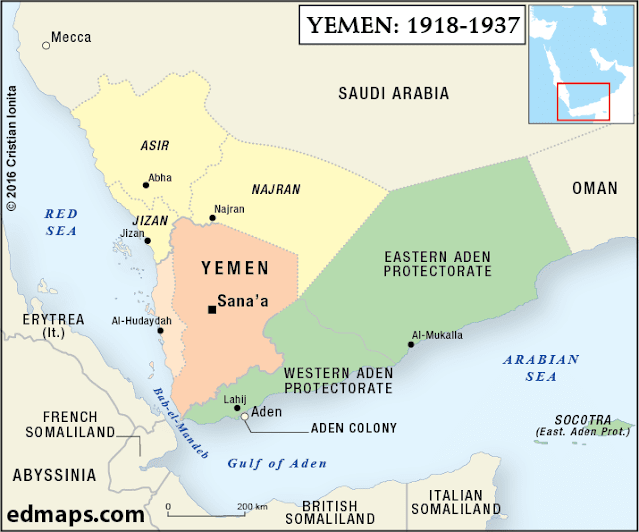FEATURE: Why is Yemen Important to Saudi Arabia? A Geopolitical Analysis (PART ONE)
With the war in Yemen continuing to rage, it can sometimes seem peculiar than a nation as wealthy as Saudi Arabia is so invested in the deprived, poverty ridden state to its south. Yet when moving past initial appearances, it becomes evident that Saudi Arabia has a number of geopolitical reasons for valuing the state of Yemen so highly. In this article we will analyse those reasons.
Economic Security
In order to economic diversification, the Saudi’s have implemented an economic plan dubbed: ‘Vision 2030’. The ‘Vision’ aims to generate alternative sources of income, through tourism, a domestic military industry, sporting events as well as several mega projects. The importance of Yemen to Vision 2030 becomes apparent when observing the geography of Saudi development. Saudi Arabia is famous for its sprawling deserts that dominate the vast proportion of the landmass, yet it does have fertile areas which are primed for human settlement on the Red Sea. It is these areas in which the vast majority of flagship ‘Vision 2030’ projects are being developed, such as the Red Sea Resort Project (the development of 3,000 holiday homes), the King Abdullah Economic City (an economic-mega project worth $27 billion), Jizan (an industrial seaport), NEOM (a $500 billion mega-city specialising in biotechnology) as well as billions of investment in Jeddah’s port infrastructure to develop it into a logistical, transport hub. Yemen borders these vast developments and as the region increases in economic value, it is of vital importance for Saudi policy makers to ensure a stable border region, not only for the safety of the rapidly growing population, but for the peace of mind required to attract investors and ensure the diversification of the economy and in turn the continued rule of the House of Saud.
The Combination of Domestic Security and Economic Diversification
This has given impetus to Saudi intervention in Yemen, due to the high importance of Saudi economic diversification plans, as well as the need to ensure Saudi Arabia’s internal security. It is important to contextualise this intervention, as the shared history of Saudi Arabia and Yemen has been far from placid. In 1934 Yemen invaded the newly formed Saudi state but was repelled, losing control of the three modern Saudi provinces of Asir, Jizan and Najran. Henceforth relations were icy between Saudi Arabia and Yemen, with violence spreading across the border particularly during the North Yemeni Civil War (1962-1970) and the Yemen Civil War (1994). Such was the extent of cross border violence, that Saudi Arabia began the construction of a concrete wall across the entire border in the year 2000. This history of violence erupted most recently in 2015, with the Saudi-led intervention in Yemen in order to restore the pro-Saudi president Hadi who had been ousted by the Shia Houthi rebels. Since Saudi intervention, cross border violence and terrorism between the Saudi’s and Houthi’s has reached an all-time high. Mortars, SCUD missiles and drone attacks have been launched as far into Saudi Arabia as the political centres of Riyadh and Taif, but there has been a particular focus upon Saudi infrastructure networks and economic projects. As early as May 2015, Houthi rockets forced the closing of Najran airport, before targeting electricity stations in Jizan. In 2017 SCUD missiles hit the oil refinery near the Red Sea port of Yanbu, while in 2018 numerous ballistic missiles for several days in a row were launched at Jizan’s airport as well as at a Saudi Aramco oil facility.
Attacks have been numerous and targeted to increase economic damage. On
November 23rd 2020, a an array of missiles were launched at Saudi Aramco’s
facilities in Jeddah. One of the facilities tanks were hit, knocking out 10%
of all oil stored at the plant. Similar attacks prior to the
Initial Public Offering (IPO) for Saudi Aramco in 2019 further threatened
Riyadh’s attempts to utilise oil revenue to diversify its economy. Indeed, pertinent to the
violence emanating from Yemen’s civil war is the increase in violence
originating from Islamist extremist groups in Yemen. During the chaos of the
civil war, groups such as ISIS, but even more so Al-Qaeda in the Arabian
Peninsula (AQAP) have thrived, utilising the conflict to gain territory and
wealth; being designated by the United States as the ‘most dangerous’ Islamist
terror organisation. It is from the AQAP that
the Charlie Hebdo attacks originated, while often carrying out attacks in Saudi
Arabia, with their formal aim being the ‘conquest of the Holy Mosque…
destruction of the apostate government’. In turn, Saudi policy
makers recognise the importance of a stable Yemen not simply for a secure
border, but to ensure the security of economic development (particularly oil
infrastructure) as well as to tackle the seemingly perpetual issue of extremist Islamist terrorism.
 |
| A Historical Map of the Gulf of Aden (1918-1937) |


Comments
Post a Comment